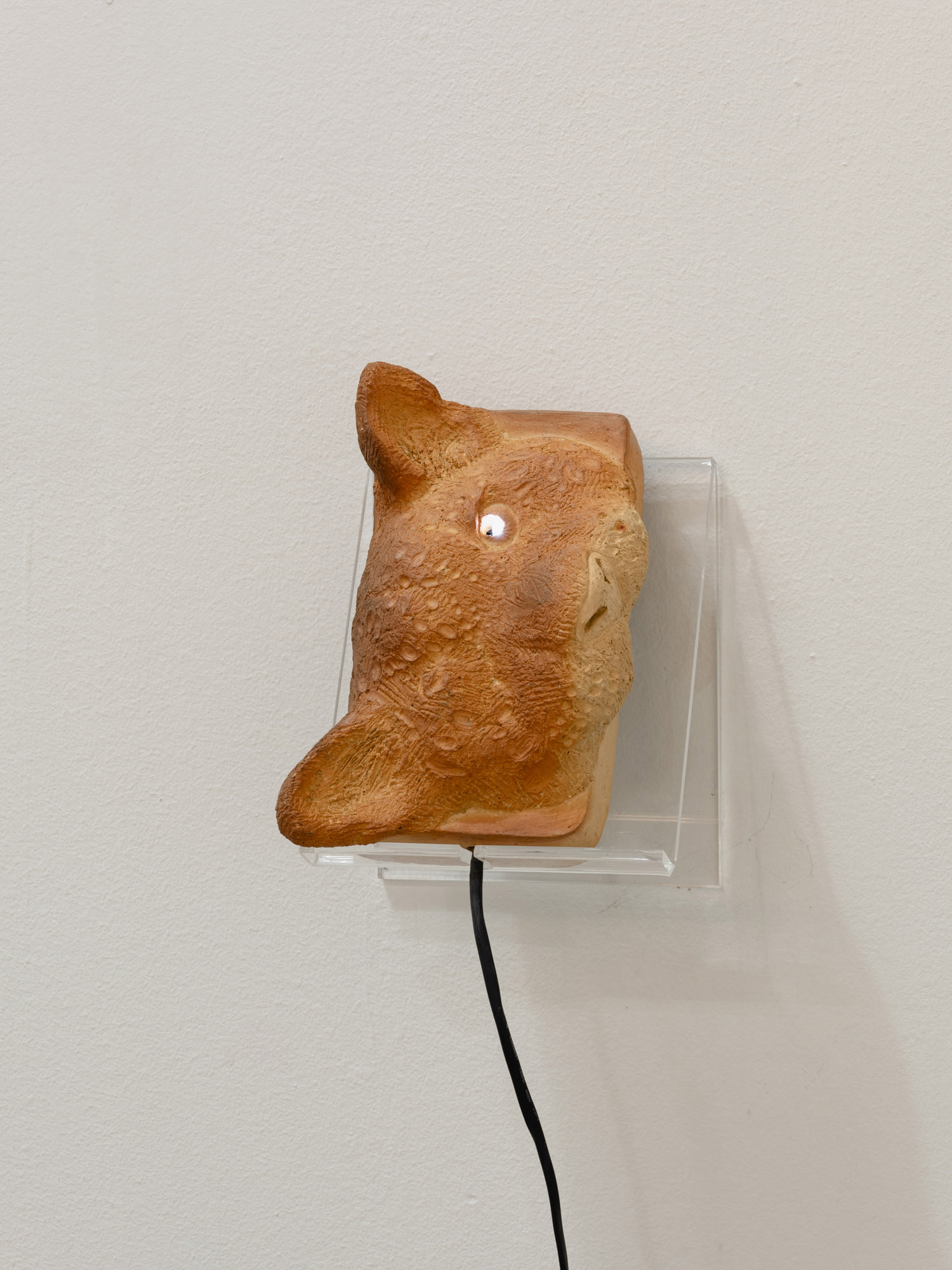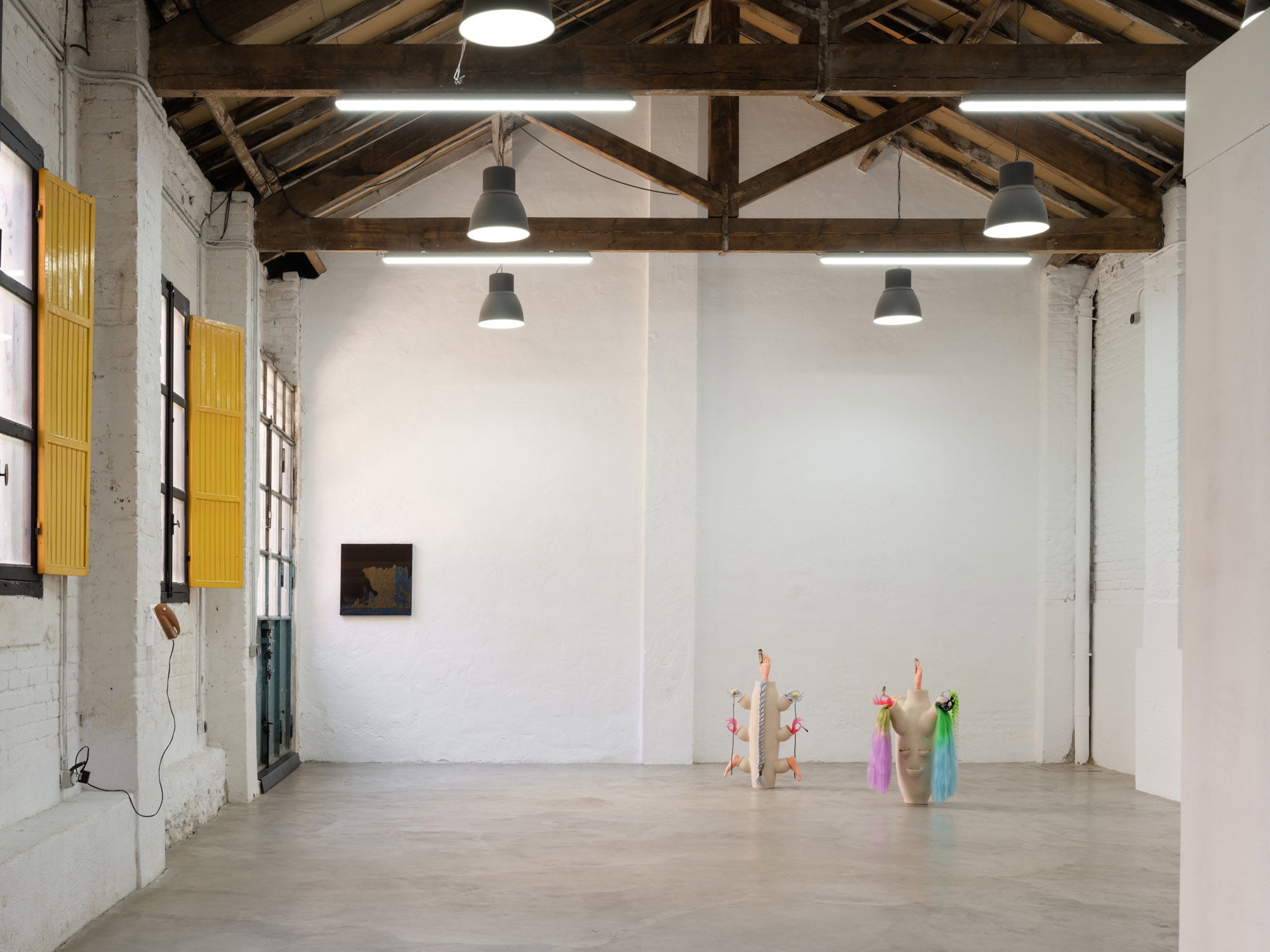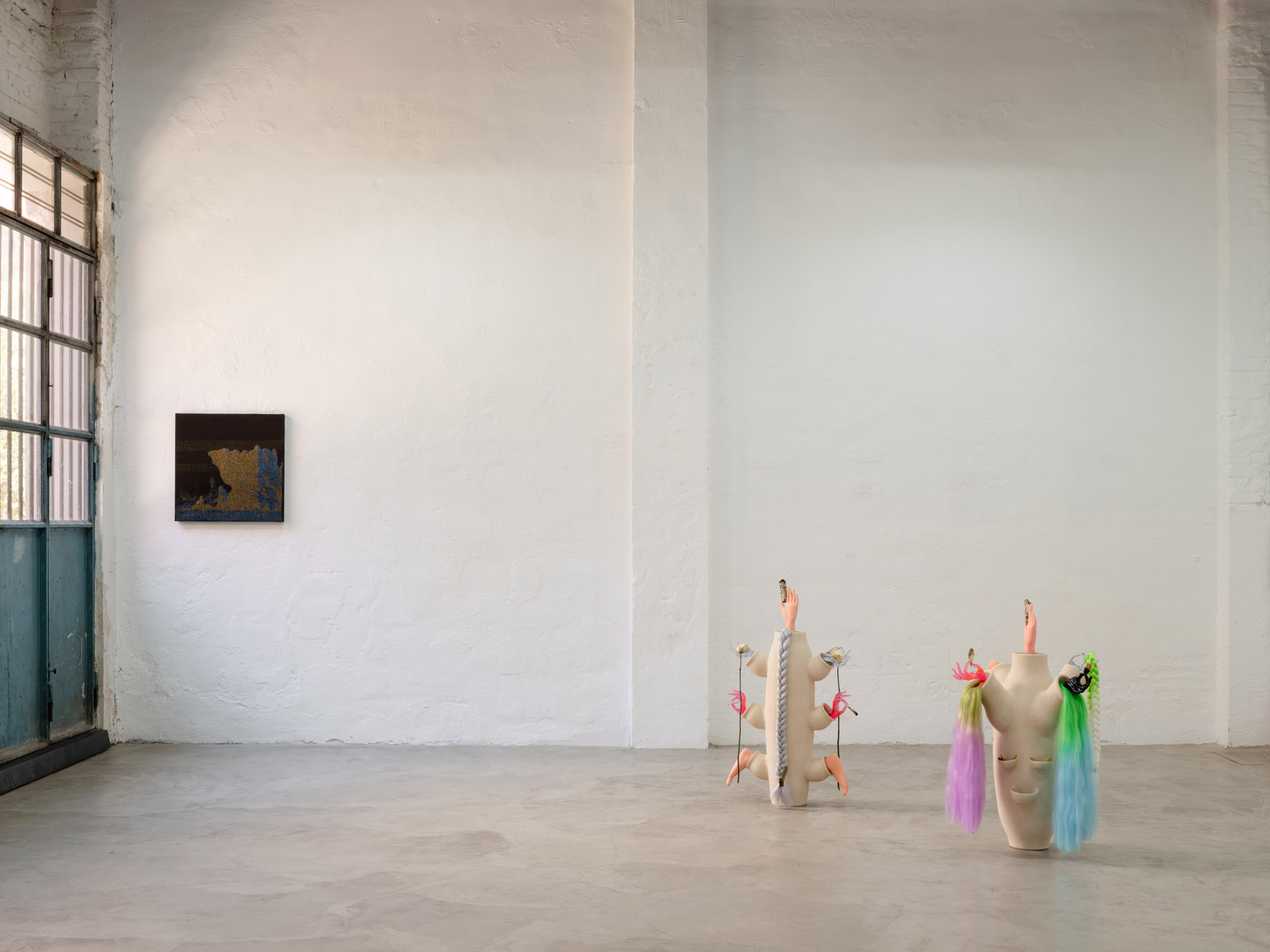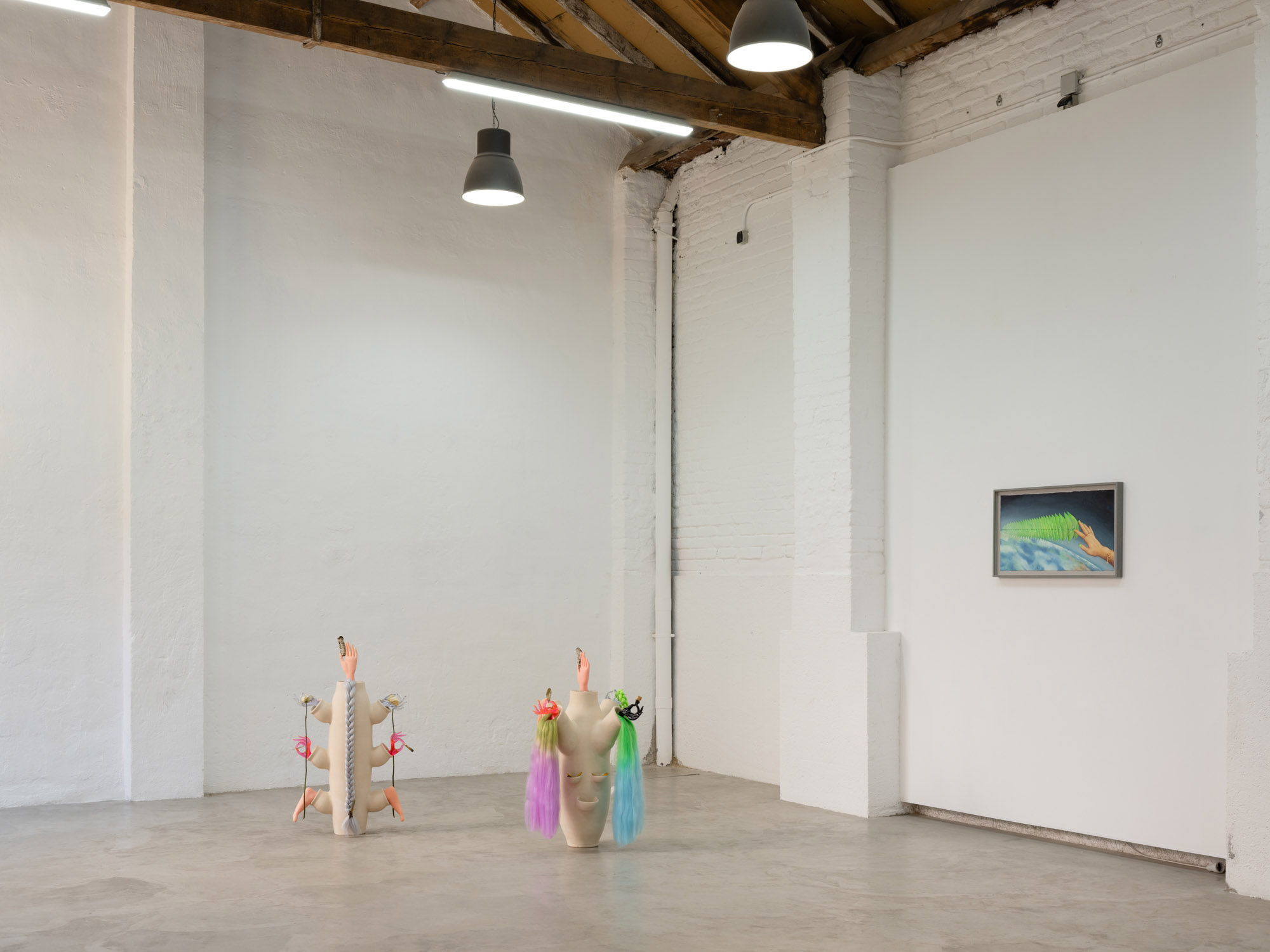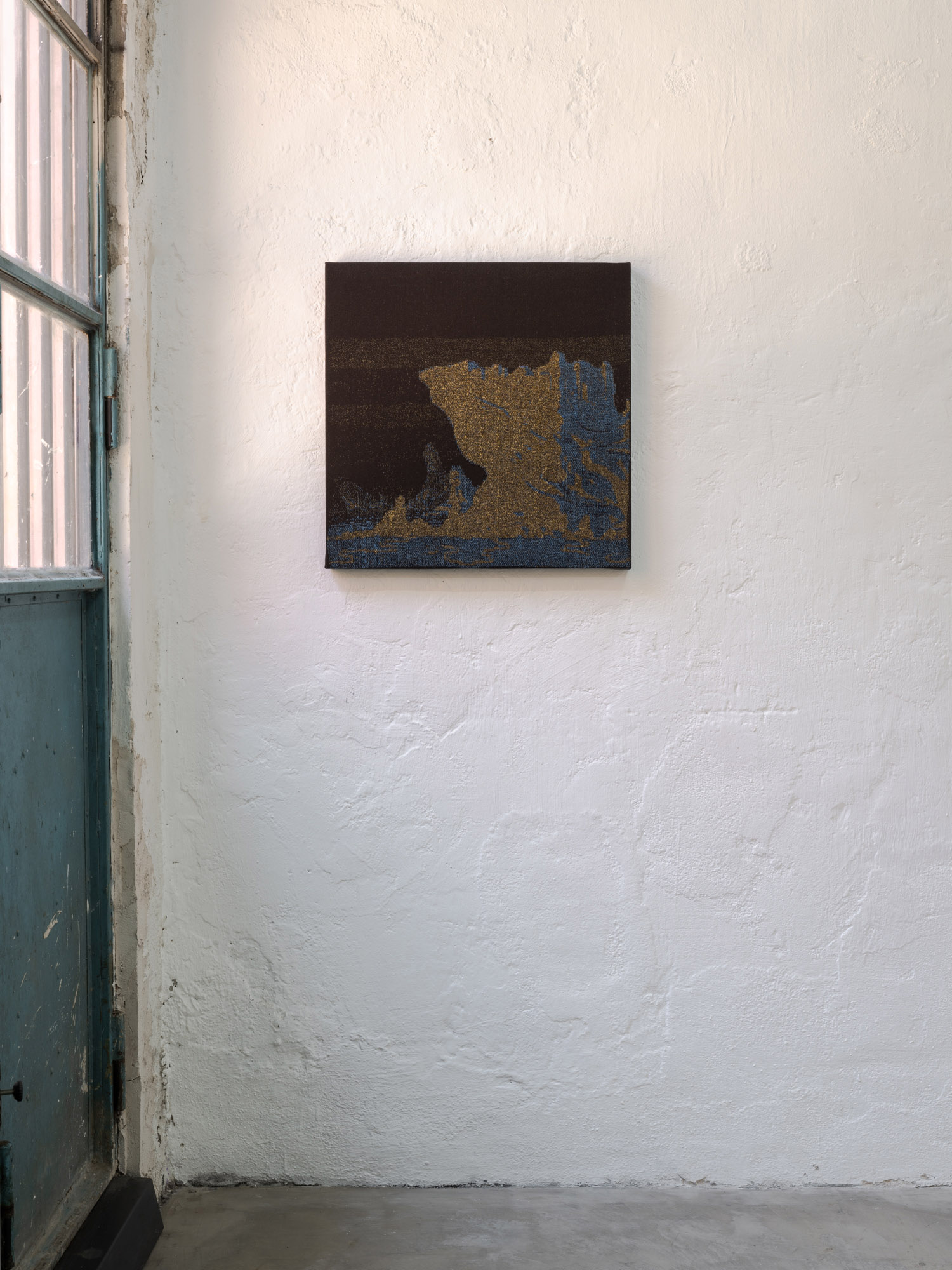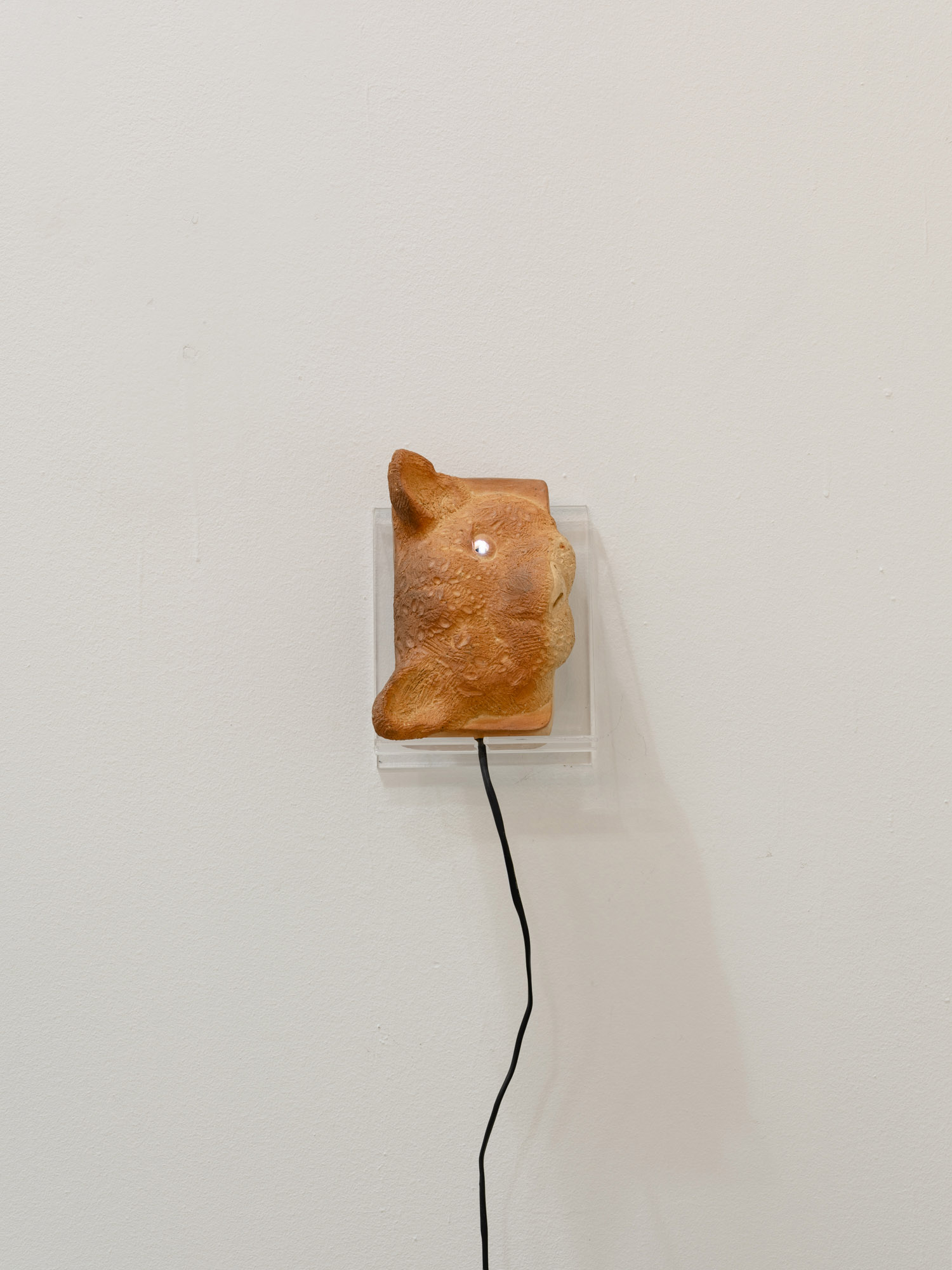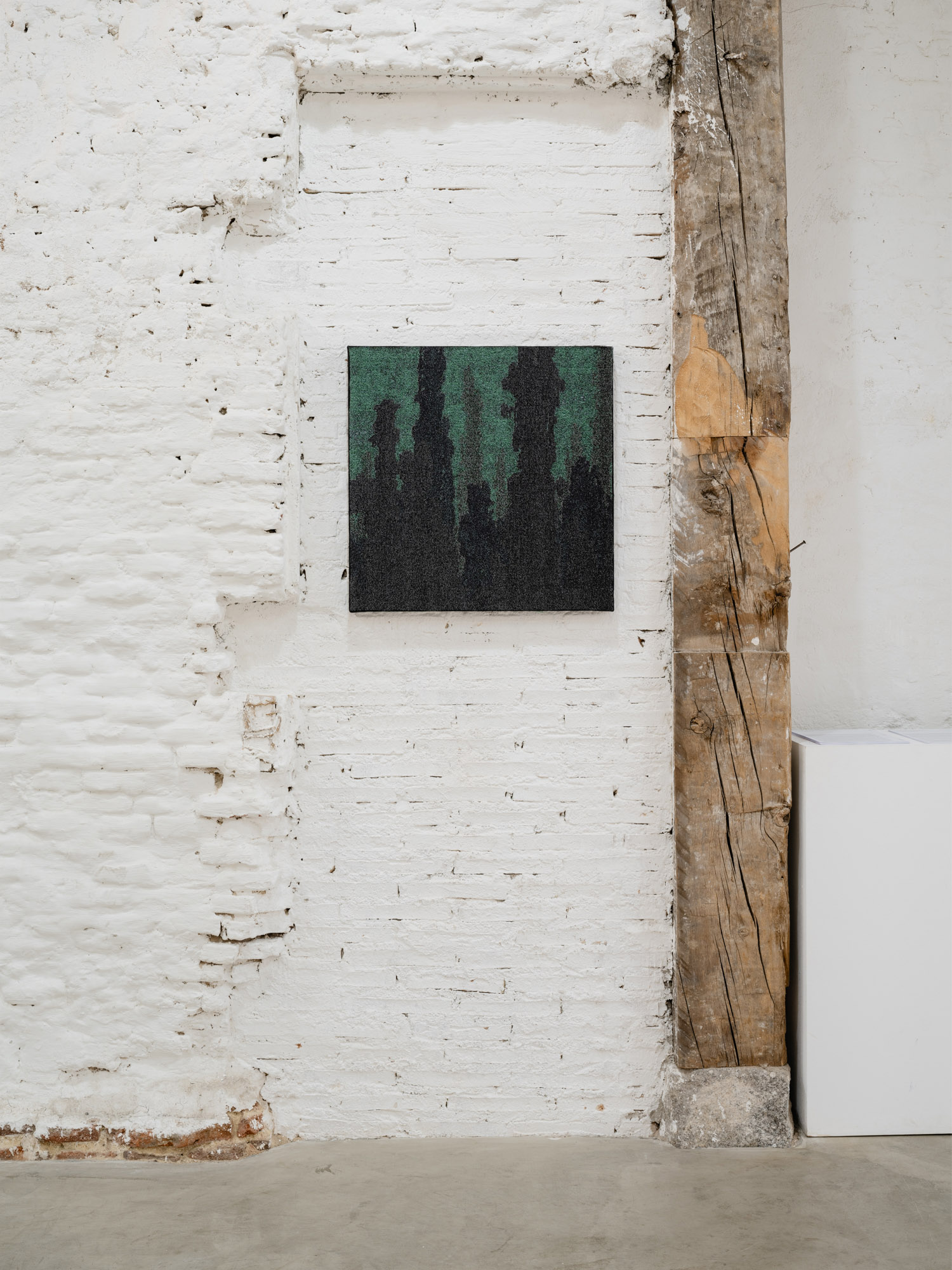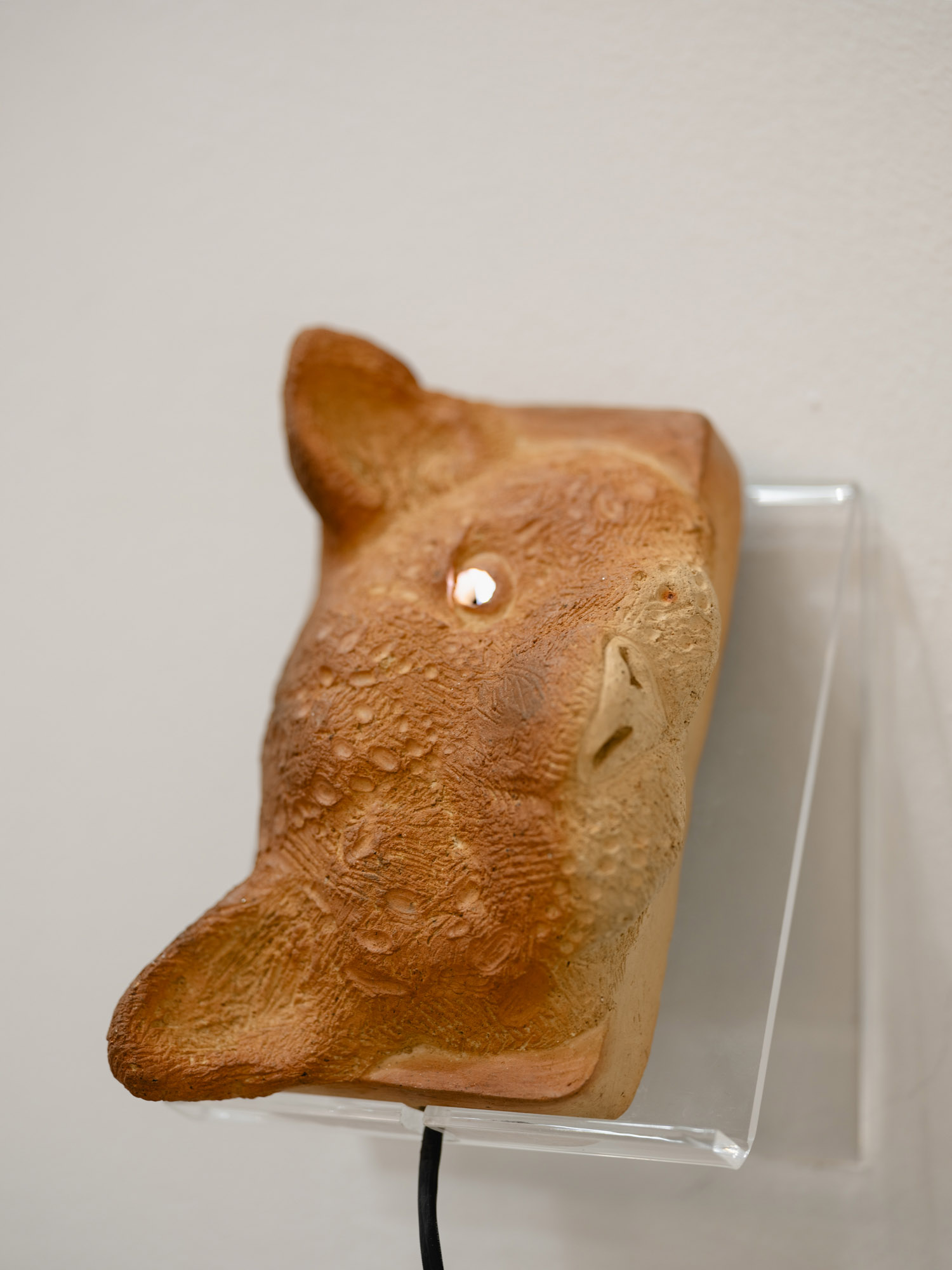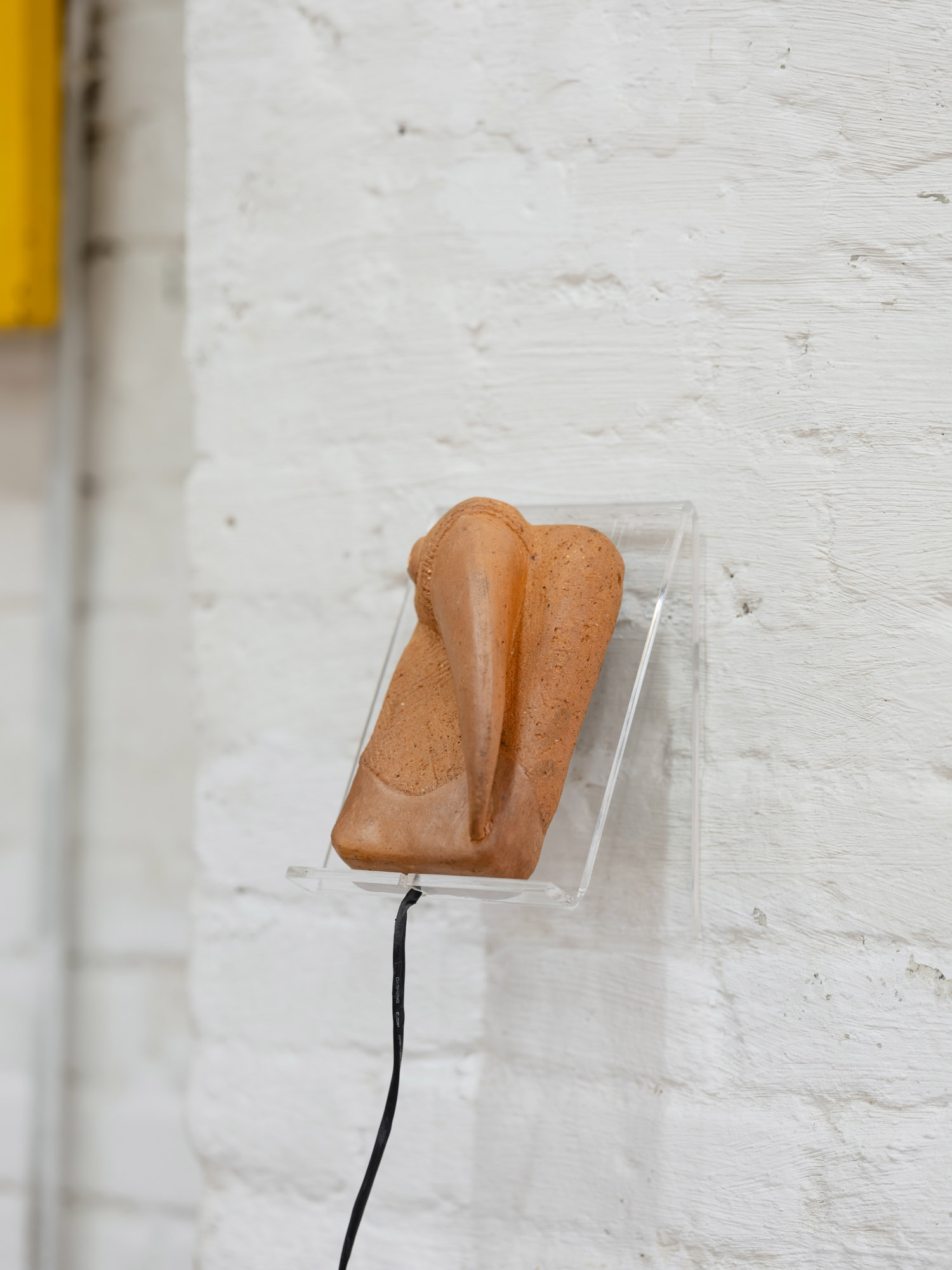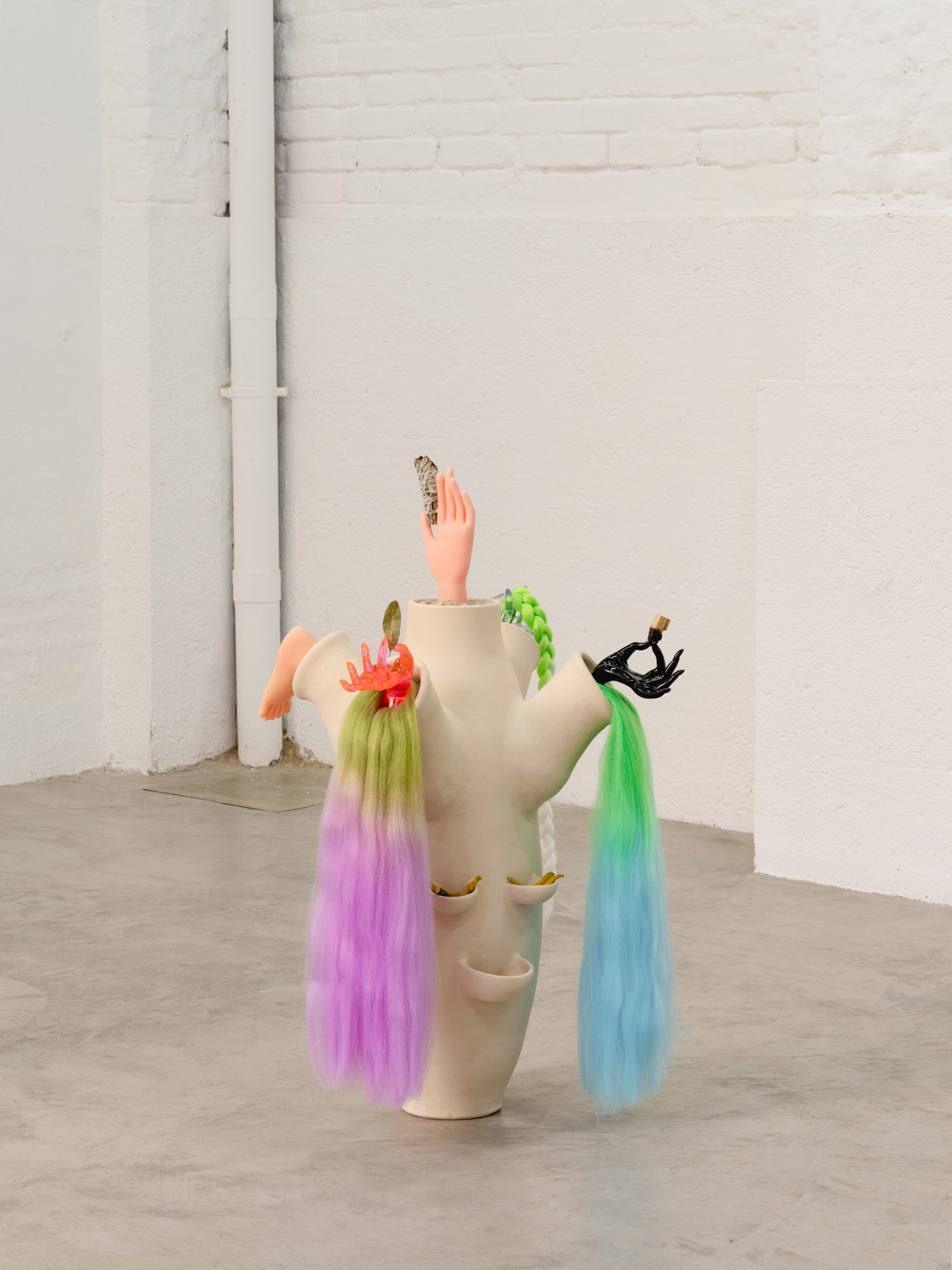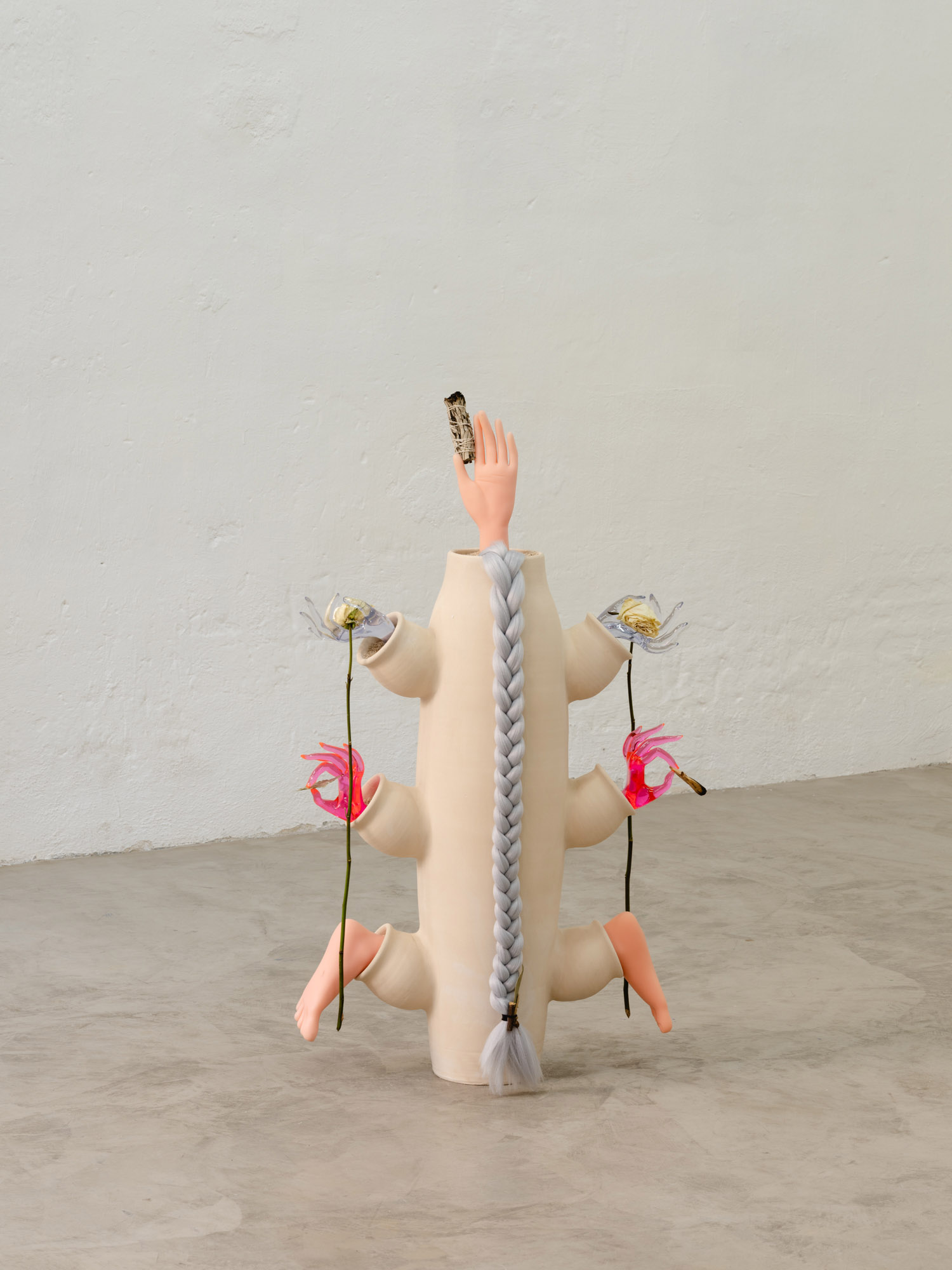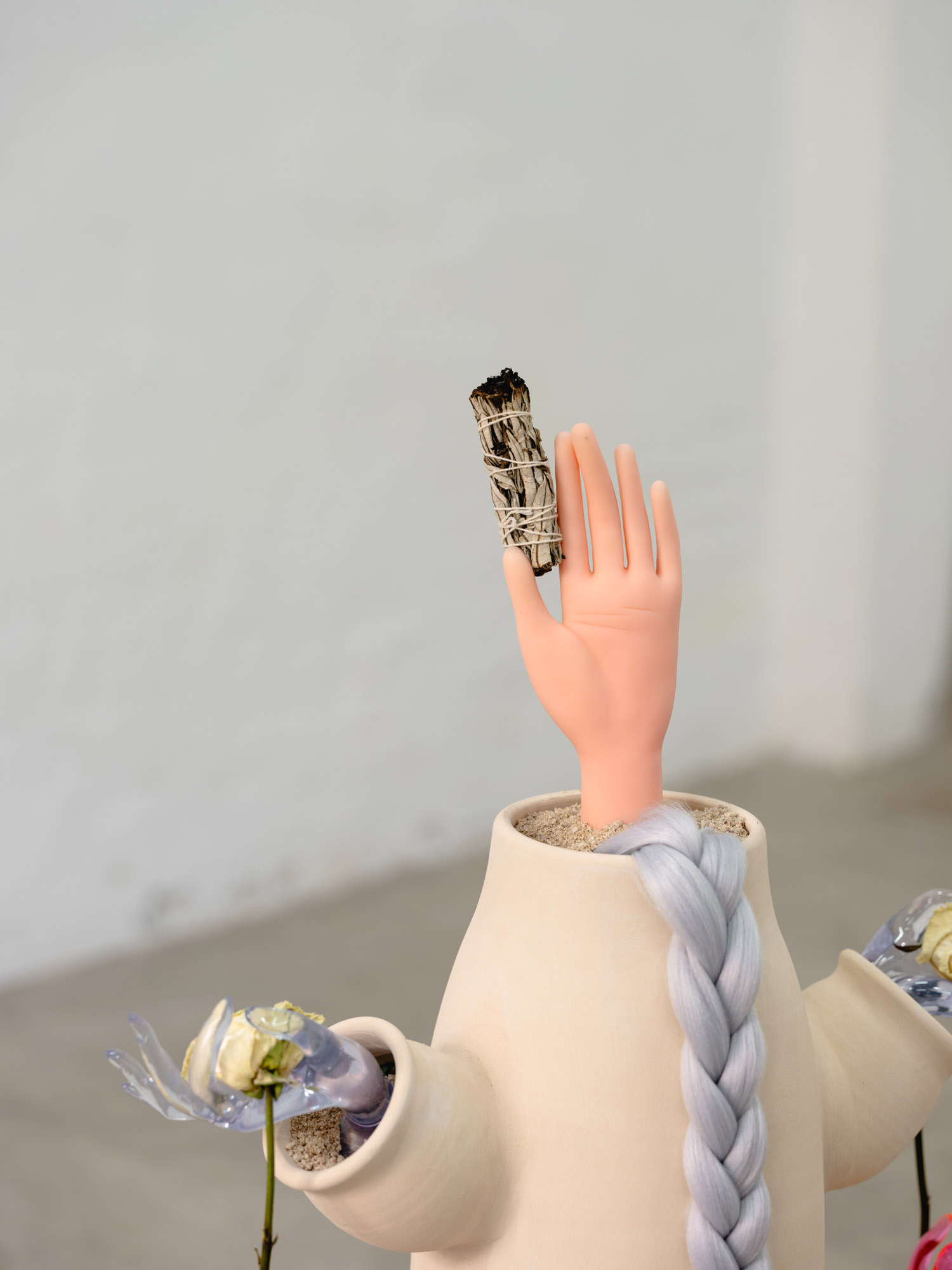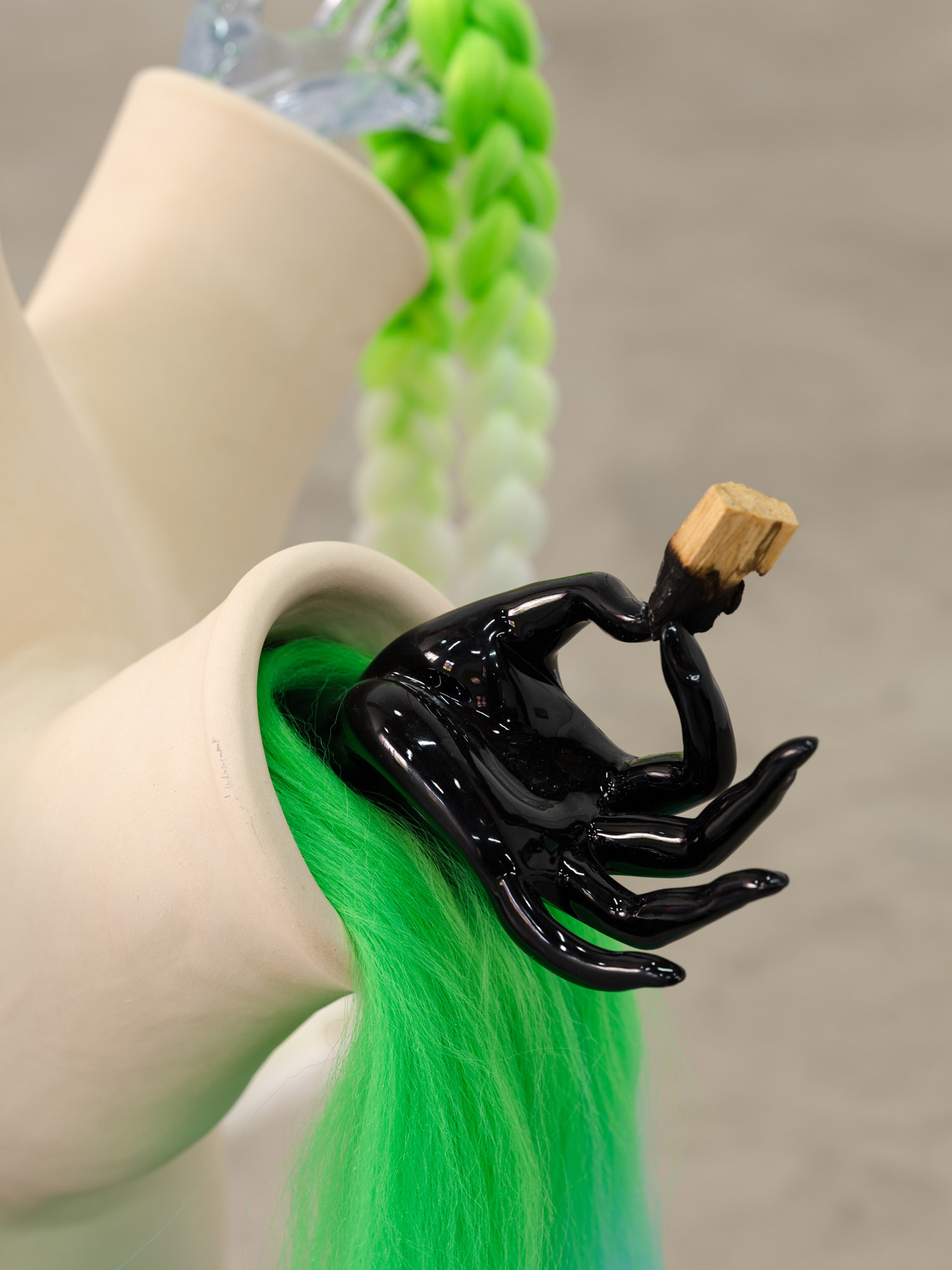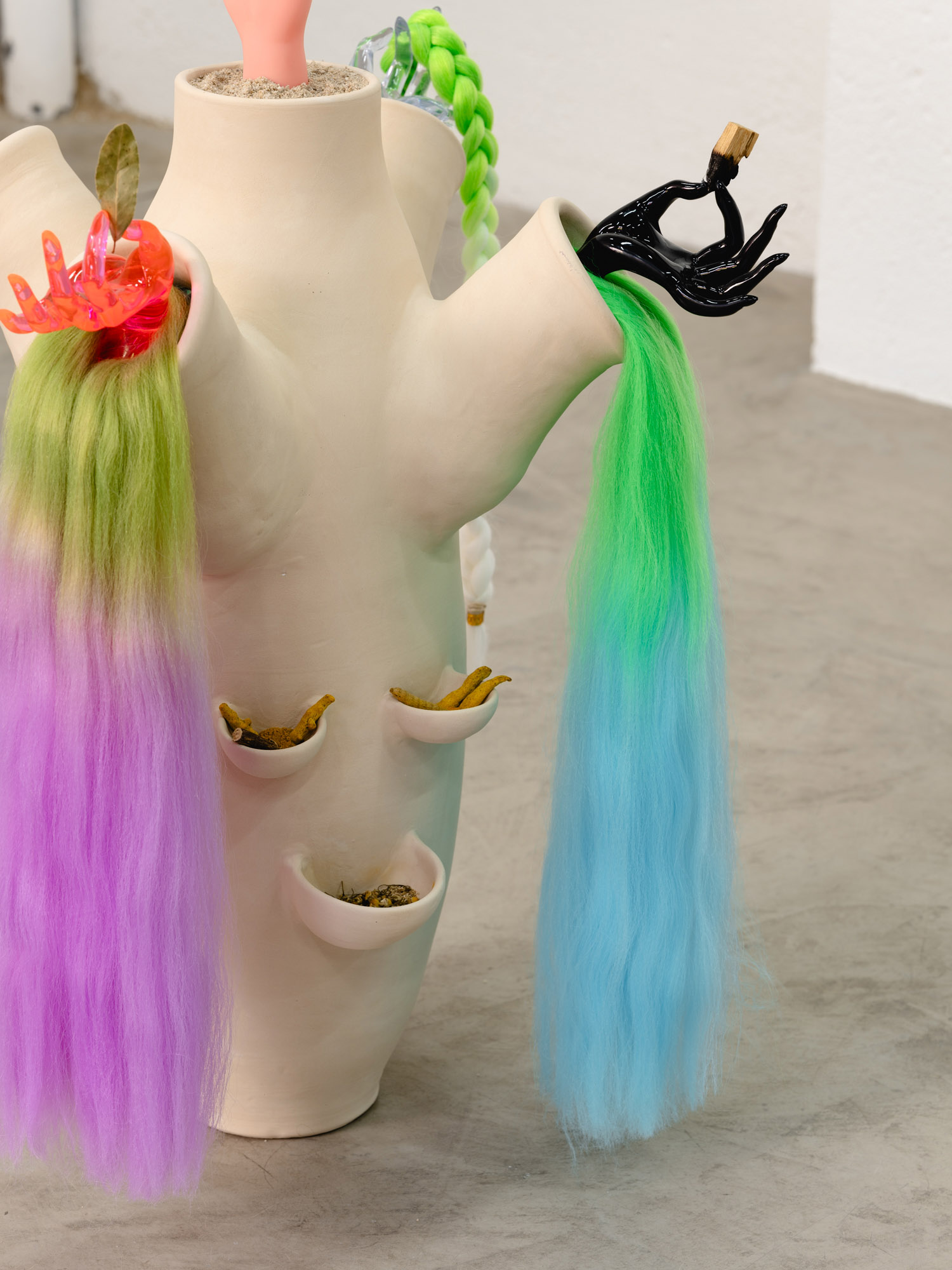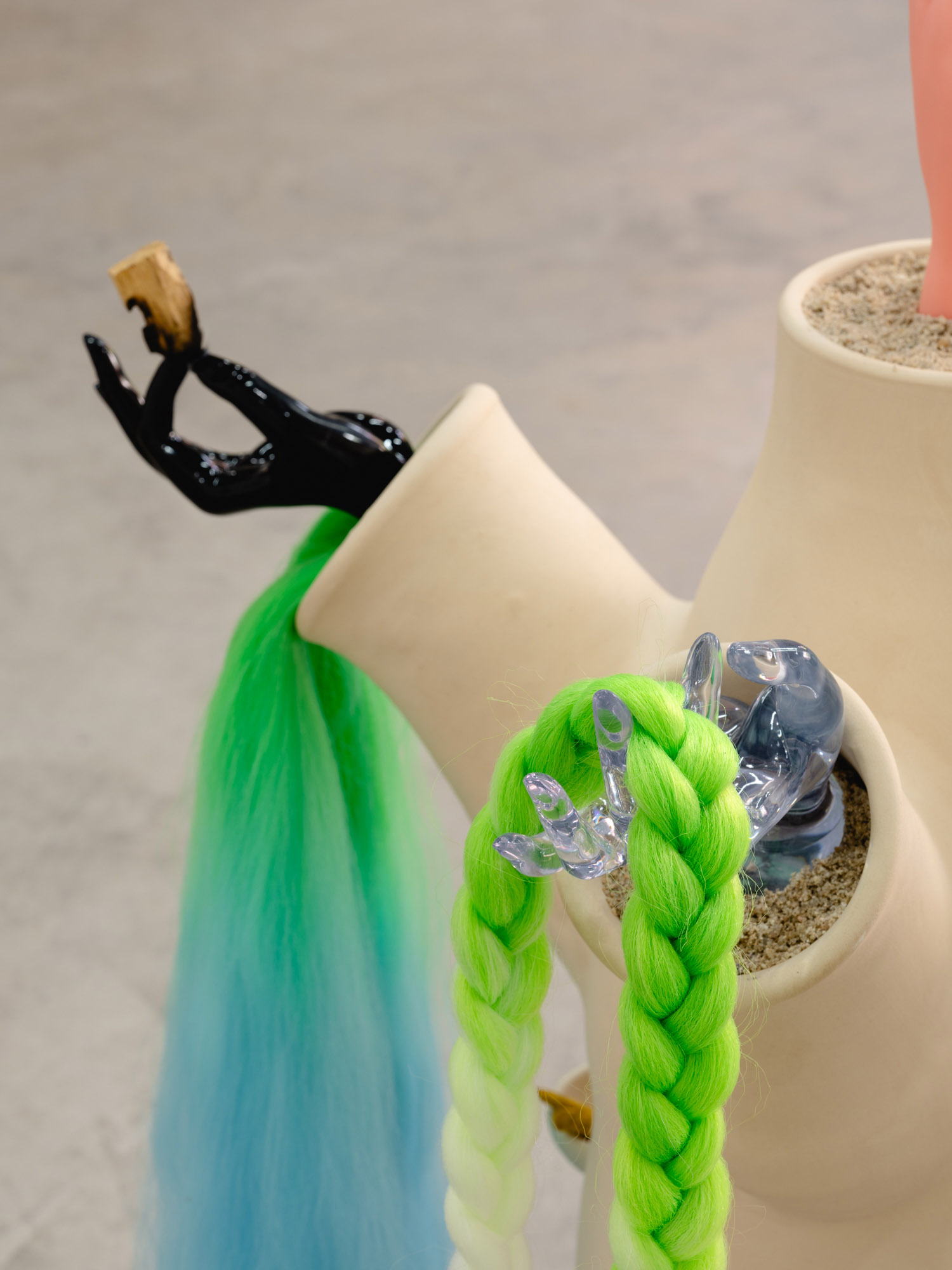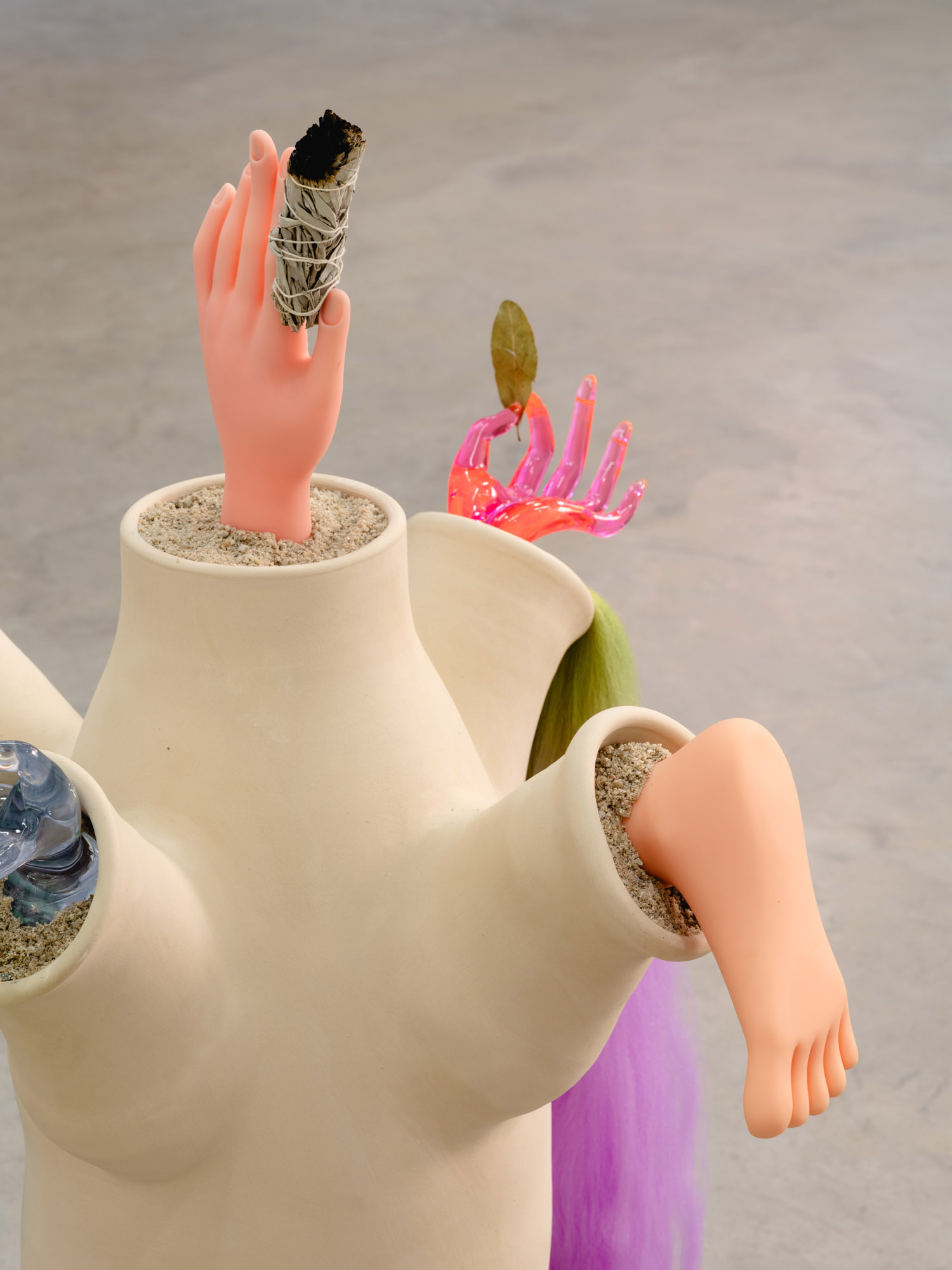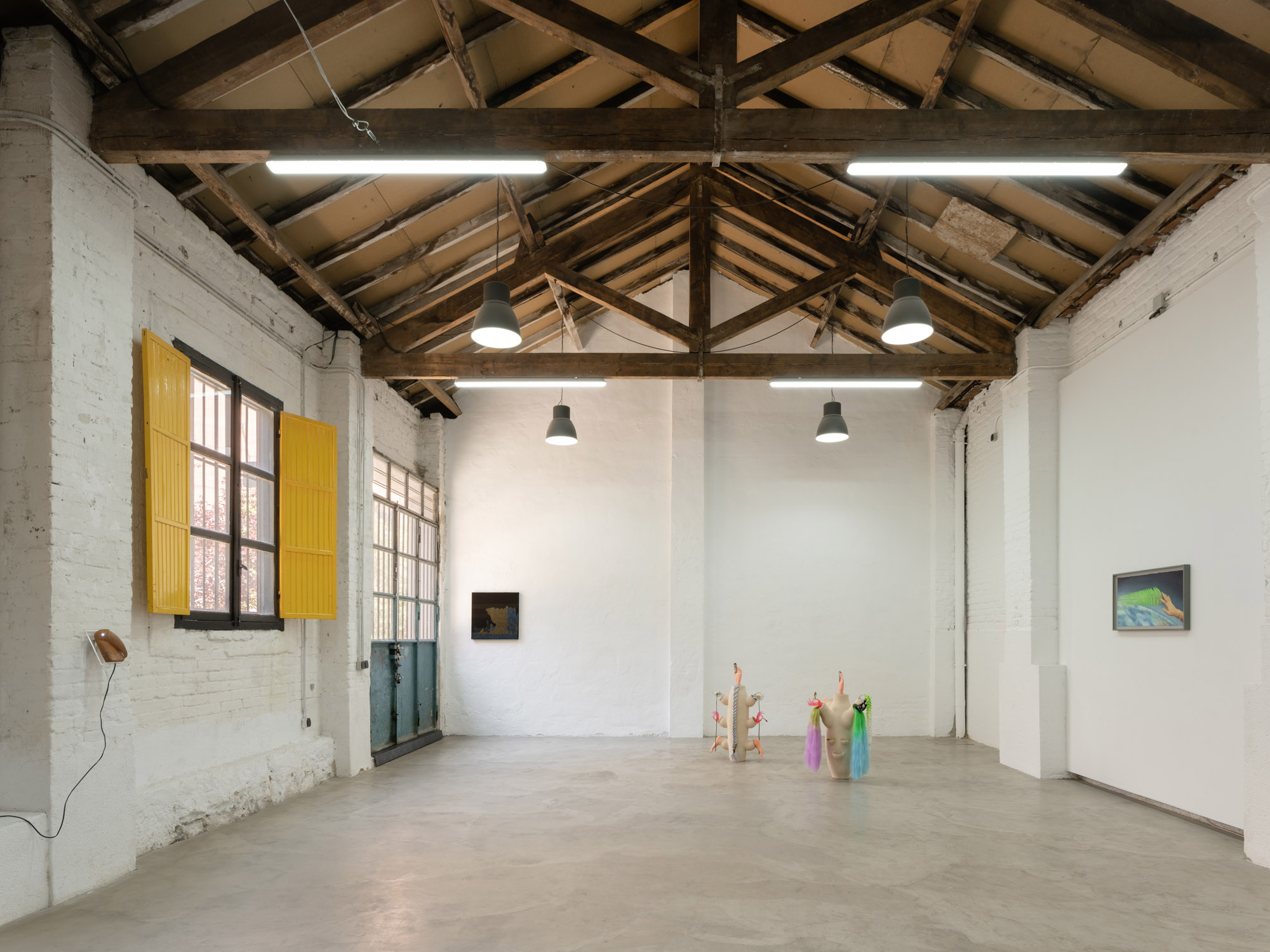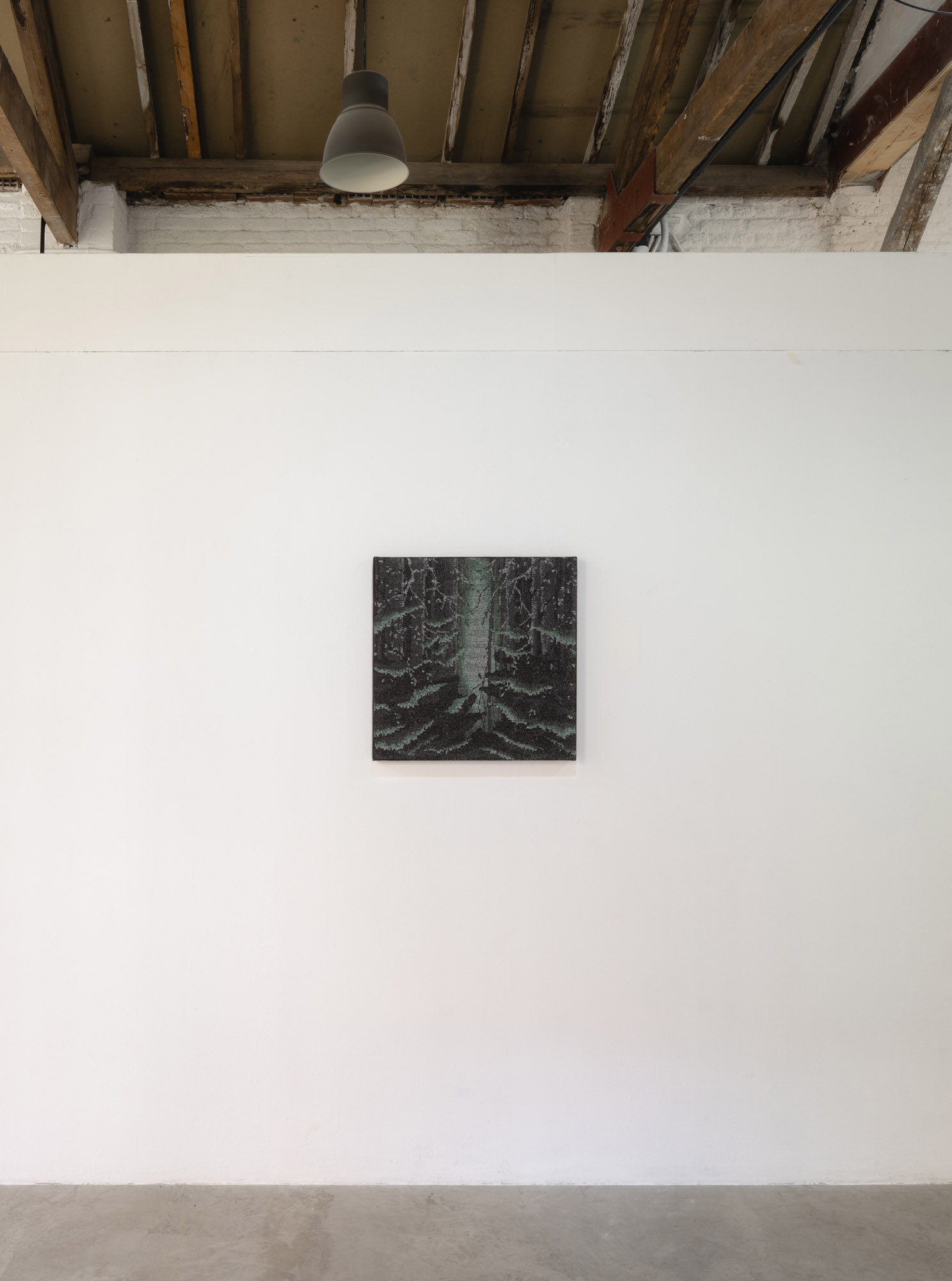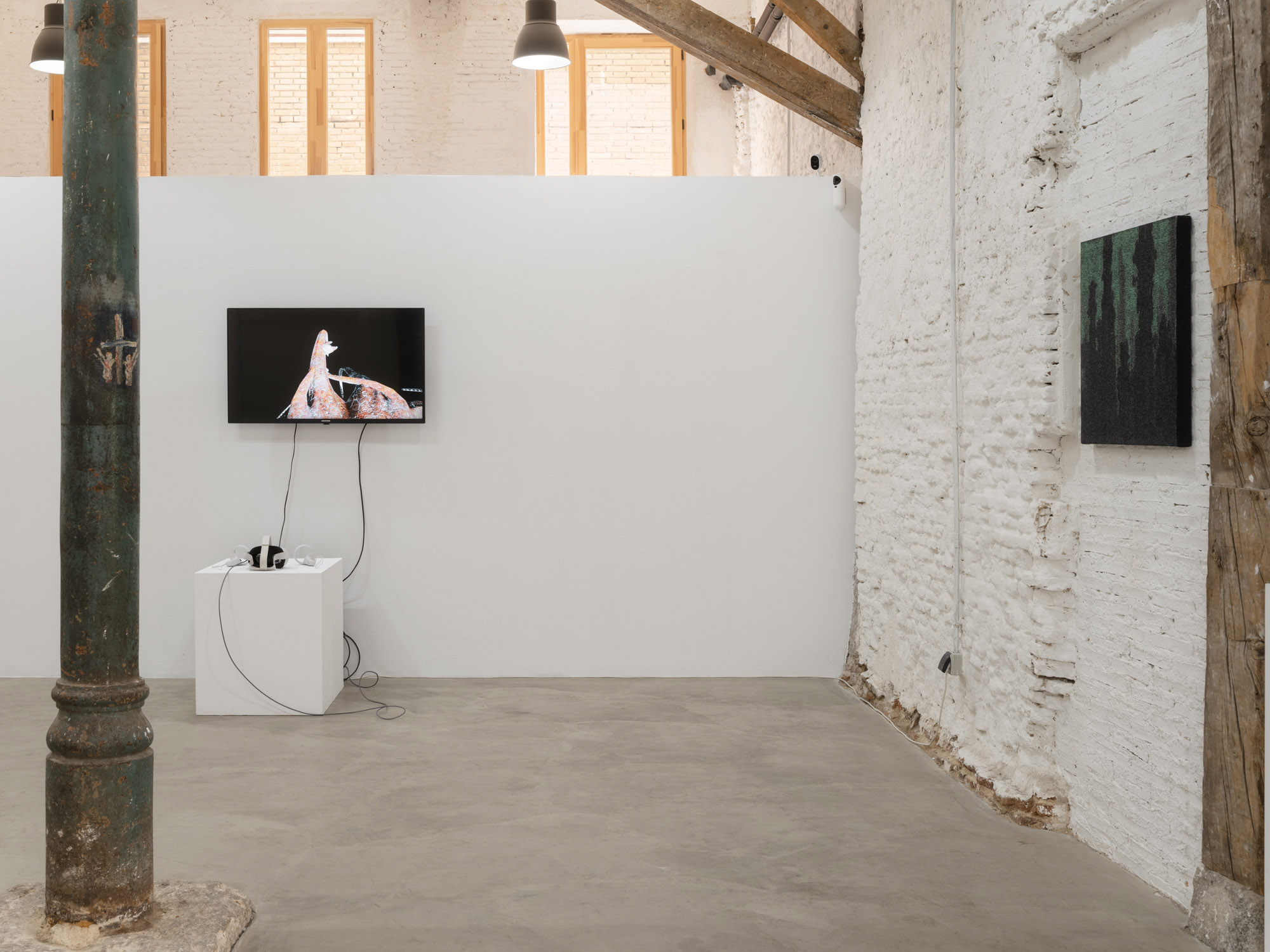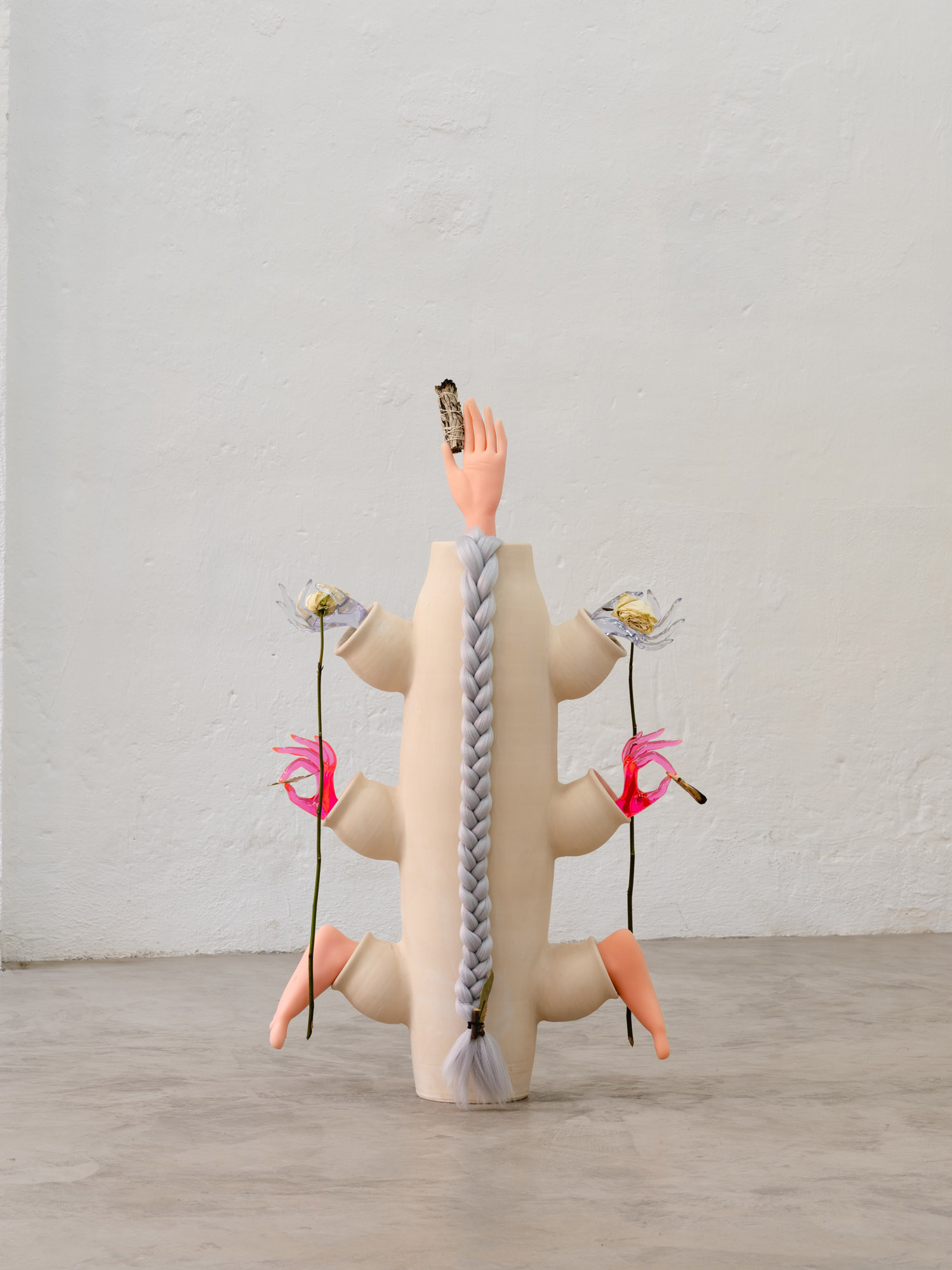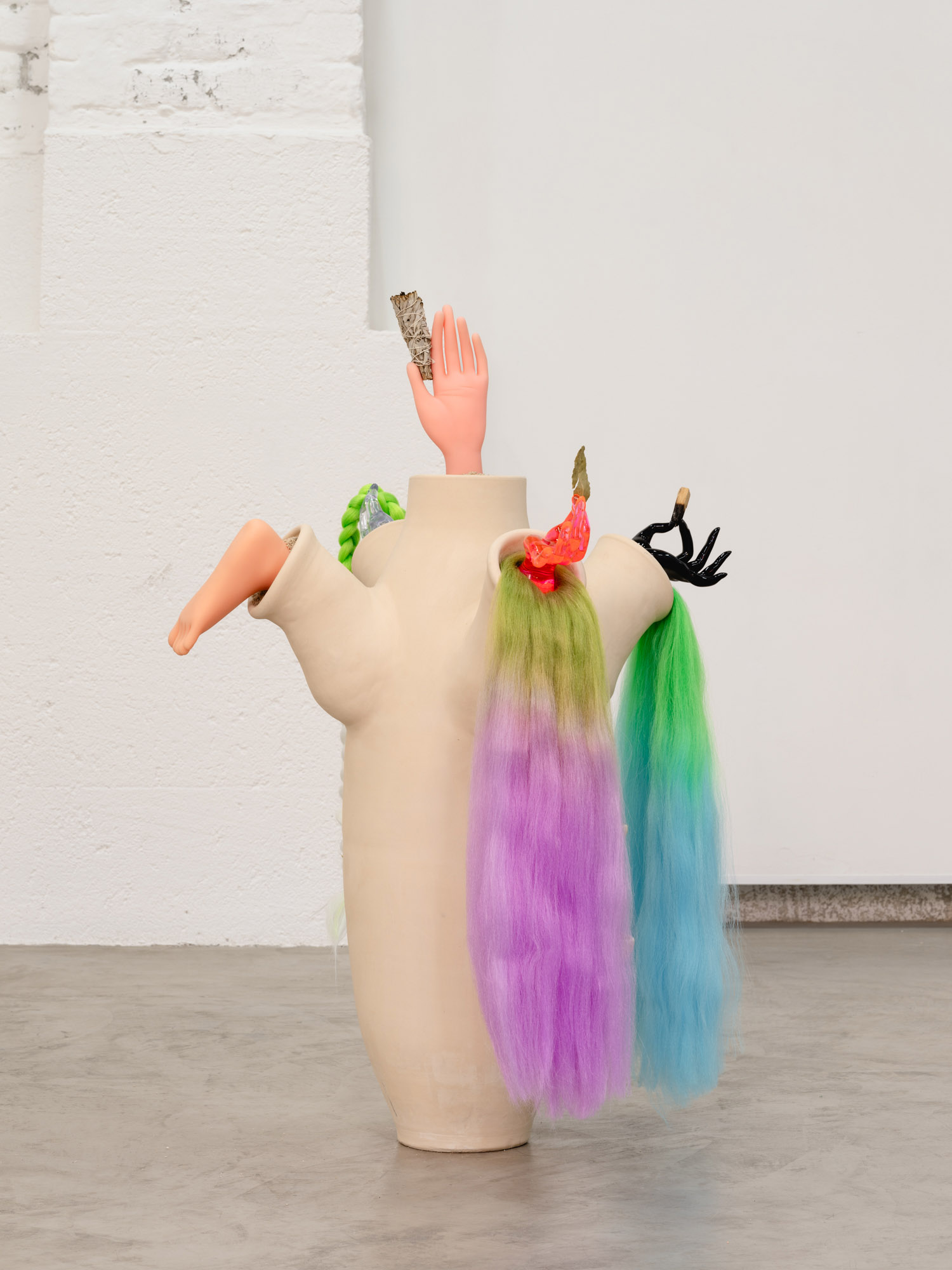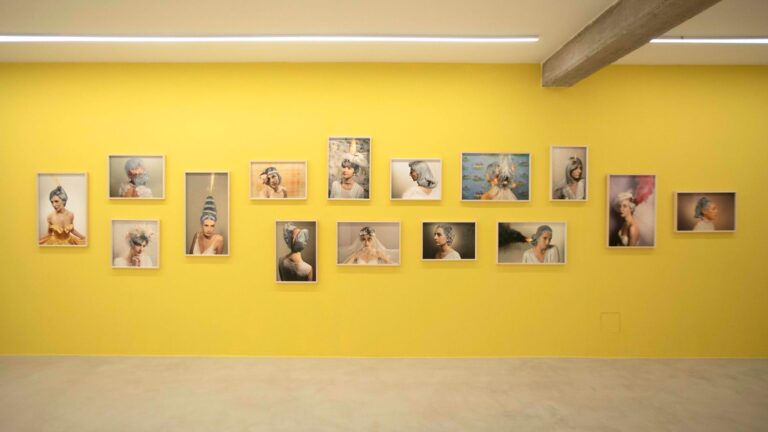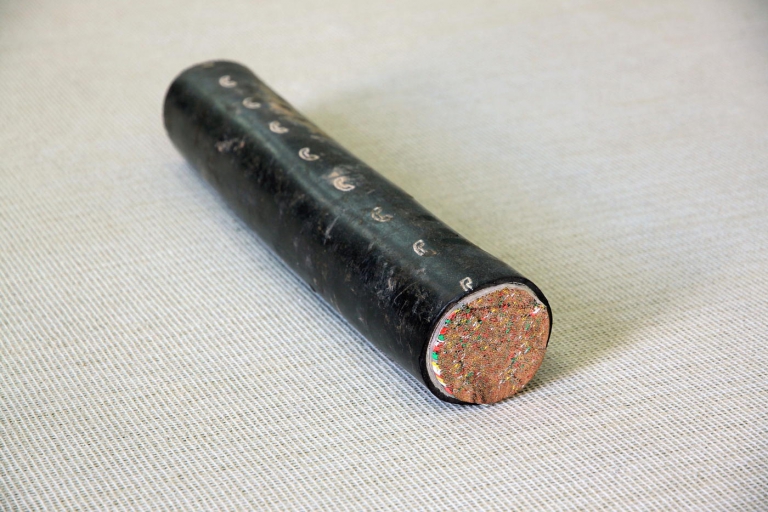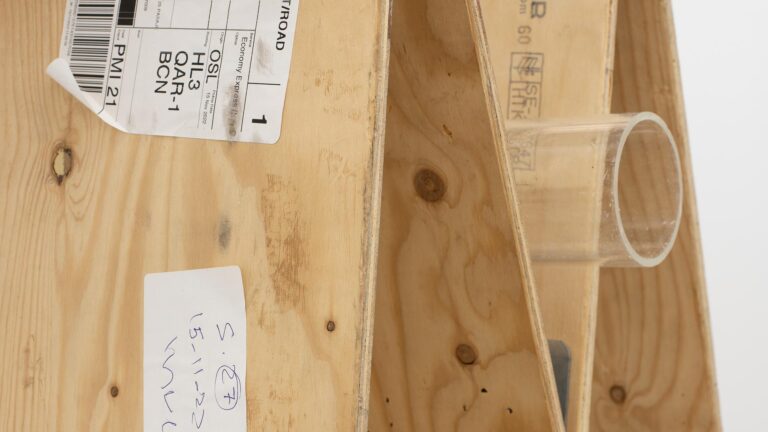Artists: Shezad Dawood, Patricia Domínguez, Karlos Gil
Exhibition title: Human Fiction
Venue: The Ryder, Madrid, Spain
Date: Jun 27 – Jul 31, 2024
Photography: All images copyright and courtesy of the artists and The Ryder, Madrid
The words you are now reading could have been generated by an artificial intelligence. If that is the case, you’ll never know, although this might not come as surprise. Writing, creating images, and many other creative skills we once considered uniquely human, have now become possible for other entities too. These entities, although made by and for humans, are still not easy to define. These new forms of existence open up spaces in reality that we previously could only imagine in fiction, bringing about a present where robots, algorithms, and artificial intelligences infiltrate and shape our lives. This prompts us an important question: where are we now drawing the boundaries of the human?
The Enlightenment bestowed upon us a Universal Declaration of Human Rights that, for over a century, delineated these boundaries. However, women, children, and racialised individuals were not initially included in this definition. The concept of human has always been intertwined with power dynamics, exclusion, and inclusion. It has never been a neutral or fully inclusive term; therefore, it has been continually expanding, debated, and even contested. Today, technological advances have introduced new forms of humanity that are entirely reliant on technology, inviting numerous other actors to contribute to this definition. Thinkers like Rosie Braidotti argue that we are currently in a phase where we must rethink the parameters of our humanity, therefore presenting new exciting possibilities. Yet, our values, representations, and ways of understanding are still rooted in outdated conceptions of human nature. Braidotti encourages us to demonstrate bravery and engage in democratic and critical discussions about who we aspire to be and what potentials we can achieve.
The exhibition Human Fiction connects the work of three artists who use their practices to imagine a humanity that expands and reconfigures itself in collaboration with technology, science fiction, and ancestral knowledge. This gathering of artists brings forward narratives that were once confined to the realm of the future, inviting us to engage with these agencies and envision a new human ideal.
Patricia Domínguez’s work focuses on experimental ethnobotany and practices related to healing and well-being. Her research explores the relationships among various species in an increasingly corporate-influenced world, where distinctions between the human and non-human are blurred. In her dreamlike watercolors, Domínguez creates technologically animated worlds where humans, plants, animals, and objects communicate seamlessly. These works, conceived during her residency at CERN (European Organization for Nuclear Research), aim to offer new possibilities for transformation, diverging from conventional interpretations and proposing fresh perspectives on the relationships between living beings and their environment.
In The Terrarium (2020), artist Shezad Dawood transports the audience 300 years into the future through an immersive virtual reality. In this fiction, 90% of the Earth’s surface is covered with water, and the protagonist has transformed into a hybrid cephalopod exploring the ocean depths. Dawood blends scientific prediction with science fiction to imagine a future where the coasts of the Baltic and Kent are connected and subject to the extractive colonisation of outer space. This fictional journey explores the repercussions of climate change on our marine ecosystems and the consequences of rising sea levels for all forms of life.
Uncanny Valley (2019) by artist Karlos Gil is a dystopian science fiction film that explores the relationship between machines and humans through the encounter between an android and its double. For this film, Gil collaborated with the Ishiguro Laboratory in Osaka, one of the most advanced research centers in robotics and the study of human-android relationships. He also worked with ATR Laboratories in Kyoto and the Miraikan Museum in Tokyo. This collaboration between the artist and leading robotics experts enabled a face-to-face meeting between a human actress and an android counterpart. In this video, which draws from the aesthetics of science fiction cinema, the communication between different forms of intelligence creates an unsettling space. An unexpected empathy arises between an artificial entity longing to be human and a human increasingly detached from the idea of humanity that once defined her. The two search for each other, making us wonder who we should identify with: a machine that behaves like a supposed human, or a human who cannot understand her reality without machines?
This interplay between humans, machines, and the ways each entity narrates stories is also present in Gil’s tapestries Stay Gold (2015 – ongoing). In these works, Gil employs a contemporary iteration of the automated Jacquard textile reproduction technique, originally developed in 1801. This historical technique used punched cards to create patterns in fabric, serving as a precursor to modern computing. Gil reproduces drawings of dreamlike worlds that he envisions, and as these artworks undergo the textile production process, they transform into abstract images. This transformation is facilitated by a machine that performs a task as human as weaving. The fabric’s weave subtly blurs the original drawing, resulting in a complex interplay of materials and techniques where the narrative authority and the represented imagery become ambiguous.
As mentioned earlier, you will never know whether this text is the product of algorithms that, based on human preferences and choices, write what they believe you need to read, or if, conversely, it has been crafted by a human reflecting on machines. However, it is within this ambiguity that this collection of works and artists operate, and where this exhibition aims to position itself. Embracing this uncertainty allows us, as Braidiotti suggests, to imagine unforeseen and maybe revolutionary forms of humanity. Maybe it is not so important to know who crafted this text; most likely, it has emerged from a myriad of collaborations between a body and a keyboard, between a mind and an artificial intelligence. These are the same collaborations that have guided you here through Google Maps and the ones that will suggest your next destination; they are the daily companions and they define our humanity.

